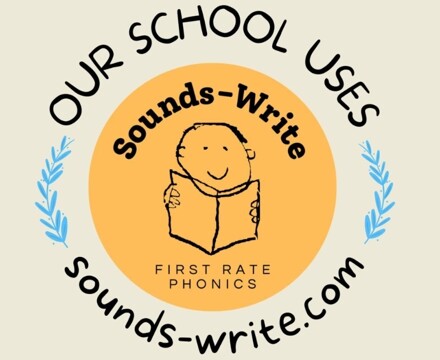- Home
- Curriculum
- Phonics and early Reading
Phonics and early Reading

Intent
At Netheravon, we know that the teaching of Phonics plays a key role in helping children learn to read, write and spell. We follow the Sounds-Write Phonics Scheme which is a high-quality, progressive programme validated by the DfE. Our aim is for all children to become confident, skilled and enthusiastic readers, which begins with high-quality phonics instruction.
Implementation
The school follows the systematic approach laid out in Sounds-Write. All staff involved in the teaching of phonics are Sounds-Write trained.
In Reception and Key Stage 1, phonics is taught in daily whole-class lessons, using the Sounds-Write methodology, structure and script. This ensures consistency across the Key Stage, enabling children to become familiar with the structure and expectations of each session. Teachers plan carefully for each lesson, based on sounds being taught and revision where necessary. Sounds-Write support materials are used at all times. Planning also includes common exception words that children will be introduced to alongside phonics teaching.
Phonics teaching in Year 1 is organised to ensure that all children are given sufficient exposure to the letter-sound correspondences that they will meet in the Year 1 Phonics Screening Check. Children are also exposed to nonsense (‘alien’) words in preparation for the check. Any child falling behind will receive additional phonics intervention work with a skilled Sounds-Write trained teacher or TA.
Children read books from the Dandelions reading scheme. This scheme is fully compatible with Sounds-Write and enables children to read books matched to their developing phonic knowledge at all times. Children take home their Dandilion books to celebrate their reading journey, after they have practiced them three times in school.
Staff involved in the teaching of phonics receive regular training, coaching and support from the Phonics Lead.
The Sounds-Write structure and approach continues to be used throughout Key Stage 2 to support with reading and spelling, meaning that children revisit the Extended Code and therefore strengthen and reinforce their understanding.
Impact
Progress in phonics is closely monitored by the Phonics Lead. Children’s progress and understanding are assessed regularly through ongoing formative assessment and summative assessment milestones, using Sounds-Write diagnostic tools and in-school assessment materials. Progress in phonics is also measured by the Y1 statutory Phonics Screening Check which takes place in June each year. Children who do not reach the required standard in the Y1 Phonics Screening Check will receive additional support to enable them to do so in Y2. Children in KS2 who are not reading at the required standard have their phonic knowledge assessed and appropriate teaching and interventions are put in place.
- Pupils will be confident in their phonic knowledge, able to segment and blend using all taught sounds and becoming fluent, successful and enthusiastic readers as a result
- The percentage of pupils reaching the required standard in the Year 1 Phonics Screening Check will be at least in line with the national average
- Pupils of all abilities will be able to succeed in phonics because work will be appropriately planned and interventions will be targeted and timely
- Parents and carers will have a good understanding of how they can support phonics at home




